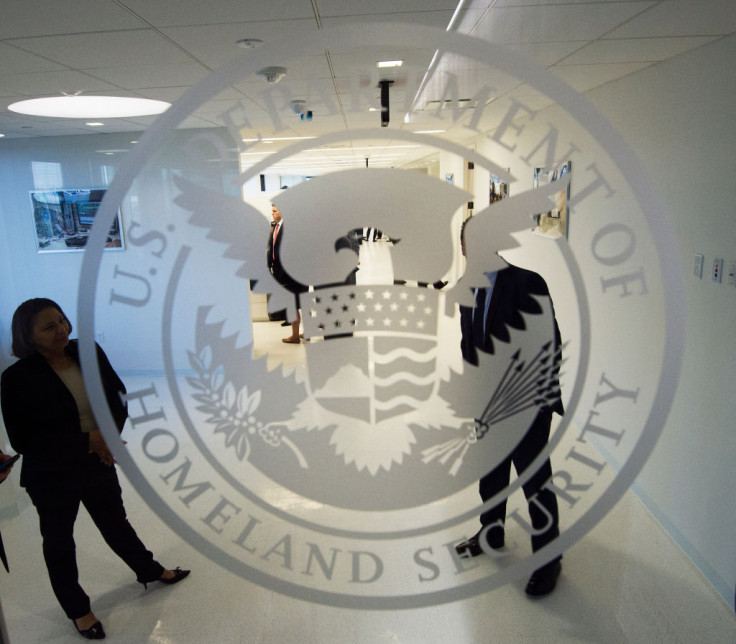
ALABAMA - With the help of President Joe Biden's executive orders which imposed stricter asylum rules, the number of Venezuelans trying to cross into the United States has seen a dramatic decrease in recent months.
In an interview with Venezuelan online magazine TalCual, Luis Miranda, Principal Deputy Assistant Secretary for Communications at the U.S. Department of Homeland Security (DHS) said that illegal crossings by Venezuelan nationals has decreased by more than 50% in the three months since the Biden administration established new rules for asylum seekers.
Miranda also said that, between July and August, that number is showing a 90% decrease compared to the figures seen by U.S. Customs and Border Protection (CBP) in May.
When asked about the decrease in traffic by Venezuelan nationals and the total amount of Venezuelans both being granted their asylum request and deported, Miranda said due to the restrictions applied in June, the 46,918 illegal crossings in December of last year has been decreased to "a little more" than 600 between July and August of 2024.
"It is a significant decrease in the number of Venezuelan nationals," Miranda said. "Even since May, there were 6,570 illegal crossings and we have seen a strong decrease in the amount of Venezuelans, but also migrants from other countries, for a decrease of more than 50%," he added.
According to CBP data, out of the more than 2.7 million illegal crossings so far during Fiscal Year 2024, Venezuelans account for almost 300,000 of those crossings. September of 2023 saw the biggest peak of Venezuelan migrants crossing into the U.S. during the Biden administration, with more than 72,000 illegal crossings.
In terms of Venezuelan migrants being deported and sent back to their home country, Miranda said that the U.S. is doing quick returns thanks to the executive order. We are deporting people at a much higher and easier rate and, between June 5 and Sept. 10, we have sent back more than 131,000 individuals from 140 different countries," Miranda said.
The Assistant Secretary for Communications also added that the U.S. can send people to their respective countries or to third-parties, such as Mexico, who for more than a year has received migrants from Cuba, Haiti, Nicaragua and Venezuela.
Due to President Biden's executive orders signed in June imposing stricter asylum rules, Mexico has seen an increase in its migrant population.
According to data published in June by Migration National Institute (INM), migration in Mexico jumped to almost 650% year-to-year, almost reaching a record 1.4 million migrants encountered between January and May of 2024. Out of that total, the INM reported that 377,401 of the migrants came from Venezuela.
Following the electoral fallout during Venezuela's presidential elections in which president Nicolás Maduro remained in power, experts predict that a new wave of Venezuelan migrants are preparing to leave their country.
Since Nicolás Maduro took power in 2013, more than 7.7 million Venezuelans have left their homeland, according to the UN. Most refugees and migrants from Venezuela arriving in neighboring countries are families with children, pregnant women, elderly people, and people with disabilities.
Many of them are making the journey up north via the Darien Gap, a treacherous 100-mile stretch of jungle that connects Colombia and Panama. When asked about what the U.S. is doing to prepare for a possible increase in traffic, Miranda said that Colombian, Panamanian and American governments are working together to disband human trafficking and migrant smuggling networks, improving humanitarian assistance for migrant populations and other vulnerable groups.
"We have imposed sanctions against individuals that operate ferries that transport migrants from Colombia to the Darien Gap," Miranda said. "We have put in place a few mechanisms to combat these activities even before the Venezuelan elections," he added.
Where are the Venezuelan migrants?
The Venezuelan diaspora is vast and widespread. Research shows that significant numbers of Venezuelans are living abroad. Official numbers put 75% in Latin America, with 1,7 million in Colombia, 941,889 in Perú, and 523,553 in Chile. Also more than half a million Venezuelan live in the U.S. and the same amount in Spain.
© 2025 Latin Times. All rights reserved. Do not reproduce without permission.







